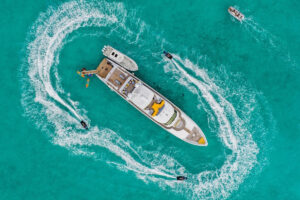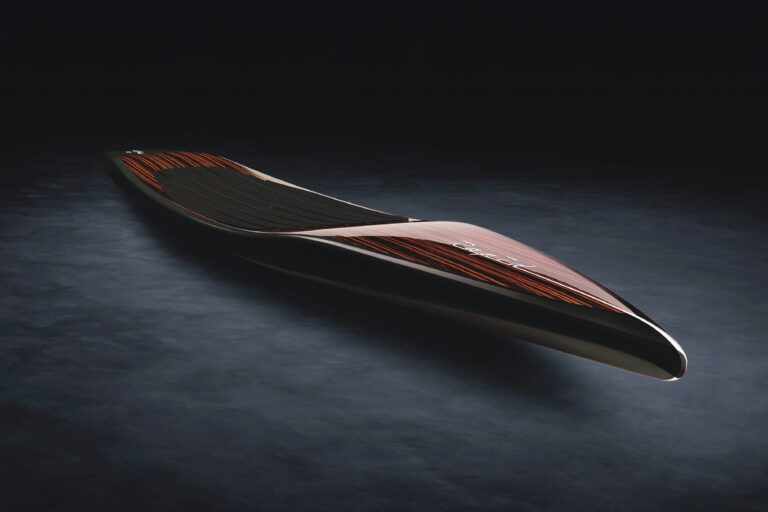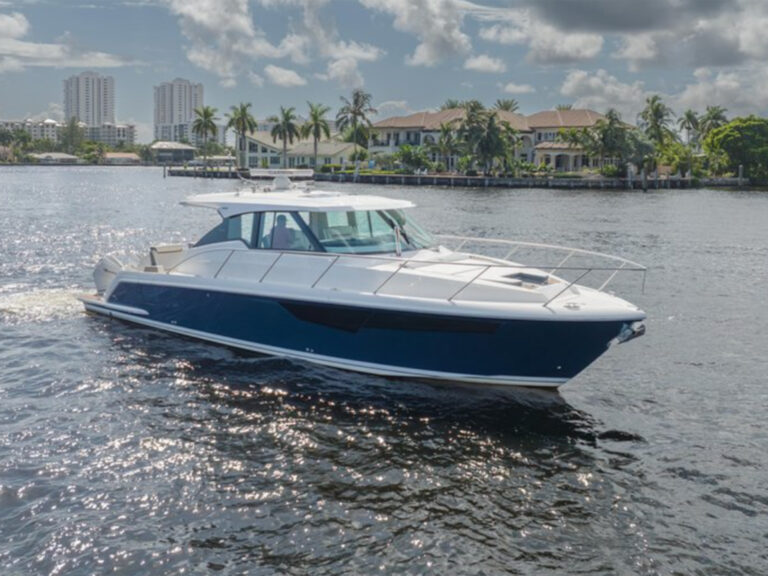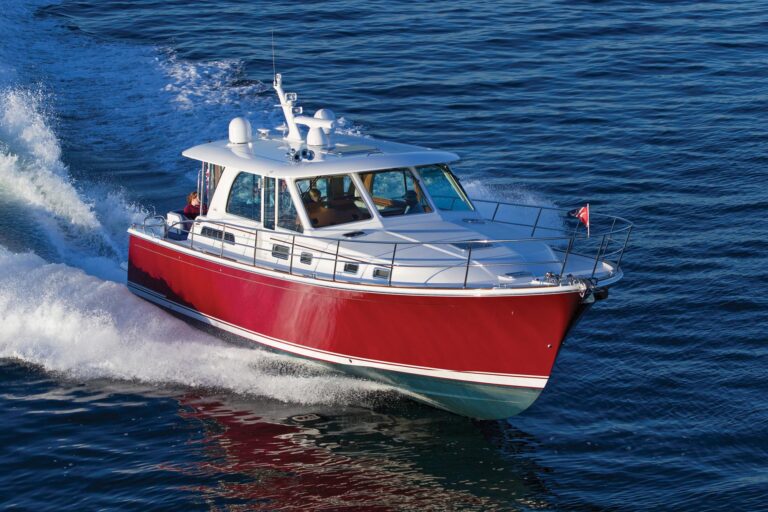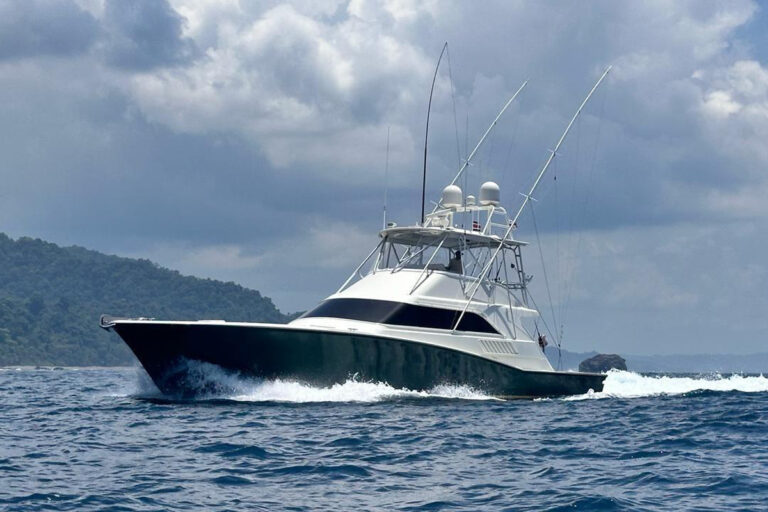Smoky clouds, pink-edged in the setting August sun, roll over the slate blue mountains that enclose Beauly Firth and Inverness, the heart of the Scottish Highlands. Two fly fishermen stand hip deep in the fast-moving River Ness in the old center of town. Their silvery lines, like the gossamer filaments of a spider’s web, catch the evening light as the men gracefully flick and pull. Stuffed with a superb seafood dinner, I watch from the nearby footbridge along with several Scots, a pair of vacationing young Italians and my 15-year-old daughter, Abby, who is reveling in this return to a clump of her genetic roots.
Although its name means “at the mouth of the river Ness,” Inverness actually sprawls across the Ness, which is navigable only to the marine terminal and yacht haven at its mouth, and the head of the Caledonia Canal. This 180-year-old waterway bisects the northern chunk of Scotland through the Great Glen, Loch Ness, and some of the most spectacular scenery in the country.
Tucked into the southwest corner of the Moray Firth off the North Sea, Inverness was long a convenient target for invaders. Prospective conquerors had to deal with the native Picts, or “Picture People,” who went into battle clad only in elaborate tattoos. Later Scots, though better dressed, were no less fierce in protecting their land.
The town’s roots go back about 2,000 years to the invading Romans, and later invading Danes and Normans, but Inverness looks as though it began about 300 years ago (at the time of the invading English). Aside from a few semi-high-rise offices and Inverness Castle, an appalling Victorian concoction of brick-colored block, much of the town is 18th century.
Though it’s called The Capital of The Highlands, Inverness, with a population of 50,000, is a capital in spirit only. The legislative center of Scotland is Edinburgh. Nevertheless, Inverness has theater, cinemas, art galleries, shopping (with great buys in cashmere), golf, air, train and bus terminals, and the Highland Games, with burly Scots hurling cabers. Though Inverness has urban attractions, it retains a small-town feel. The Highland people are friendly and helpful. The tempo is leisurely.
“It’s very laid-back,” said Dr. Brendon Eade, a New Zealander who moved with his bagpiper wife to Inverness in 1998. We came upon him one night outside Balnain House, the old music center whose cellar bar offers nightly music, food and drink. Dressed in full-kilted splendor, Eade was playing the pipes for donations, something a number of pipers do between Inverness’ several music competitions.
“Inverness has everything,” he said, “and it’s only two hours from everywhere, but you can walk fifteen minutes outside of town and be up in the hills.”
This civilized blend of culture and nature prompted Chef Marcus Blackwell and his wife, Colleen, proprietors of The Riverhouse Restaurant, to leave southern England.
“We needed to scale back,” Colleen Blackwell said. “It was a bit much down there.”
Like Inverness itself, Riverhouse’s modest exterior hides a surprisingly rich interior. The food, as in many places in Scotland now, is terrific. Thirty years ago, getting fed-at all, let alone well-was tough. Eateries were few and far between. Pubs closed at 10 p.m. Because the summer sun sets about 9:55, the dinner hour sneaks up.
WHILE YOU’RE THERE
Inverness Tourist Office (011) 01463 772203 fax (011) 01263 710609 info@host.co.uk www.host.co.uk Charts available through Caley Marina or from Imray Laurie Norie and Wilson (011) 44 1480 462114 fax (011) 44 1480 496109 ilnw@imray.com www.imray.com Caley Cruisers Ltd. (011) 01463 236328 fax (011) 01463 236328 info@caleycruisers.co.uk www.caleycruisers.co.uk
Today, Scottish cuisine, fresh from field and stream, can go head to head with the world’s best. Dinner at the upscale Riverhouse was about $100 for the two of us, and it was fabulous. To start, we shared the seafood platter, a sumptuous spread of langoustines in butter, smoked salmon, taramasalata, smoked mackerel, marinated herring and raw oysters. We went on to fresh cod and a luscious lemon sole with white wine grape sauce, accompanied by salad and fresh steamed veggies. The house white was delicious, and the crème bruleé was the best I’ve eaten. Glen Mhor Bistro and Riva Ristorante, a delightfully noisy, crowded Italian cafe on the Ness, are two more great options.
Inverness welcomes visiting yachts, which reach the town from the North Sea through Moray Firth, to shallower Inverness Firth to Beauly Firth. Vessels can moor in one of the four transient slips at the Longman Yacht Haven’s floating dock just inside the mouth of the Ness at the commercial marine terminal. Pilotage is compulsory for all vessels of 50 meters and longer from Miekle Mee buoy in Inverness Firth northeast of Kessock Bridge. Call “Inverness Pilots” on VHF Channel 12 or phone 01463 715715.
Two yachting alternatives to Longman Yacht Haven are Seaport Marina in Muirtown Basin at the entry to Caledonia Canal, and Caley Marina just inside the Canal’s sea lock (the first of 29 locks and 10 swing bridges over 60 miles). Maximum vessel size for the canal trip is 150 feet LOA, 35 feet beam and 13 feet draft (maximum 89.8 feet high off the water at Kessock Bridge).
While the Scots have spent millennia repelling invaders, they are warmly hospitable to appreciative visitors, though I’ve never once heard “Ceud mile failte,” Scottish Gaelic (pronounced “Gallic”) for “a hundred thousand welcomes.” If need be, these folks will soften the strong northern burr for uninitiated ears, a small-town generosity that makes Inverness feel like home.


